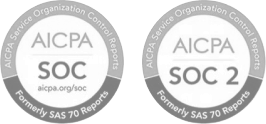Non discrimination testing
Article Navigation
Non-Discrimination Testing refers to a set of IRS-mandated evaluations designed to ensure employee benefit plans are equitable and do not disproportionately favor highly compensated employees (HCEs) over non-highly compensated employees (NHCEs). These tests are essential for maintaining the tax-advantaged status of plans like 401(k)s and Section 125 benefits such as Flexible Spending Accounts (FSAs).
Purpose: The core goal of NDT is to promote fairness in workplace benefits by ensuring that all eligible employees regardless of compensation level have access to similar opportunities and advantages within employer-sponsored benefit plans.
Highly Compensated Employee (HCE)
Definition: An employee classified as “highly compensated” based on IRS criteria. Typically, this includes individuals who earned above a specific annual compensation threshold (e.g., $150,000–$215,000) or who own a significant percentage of company equity.
Non-Highly Compensated Employee (NHCE)
Definition: Any employee who does not meet the criteria for being classified as an HCE. These individuals are the primary group used as a comparison benchmark in NDT evaluations.
401(k) Non-Discrimination Testing
Definition: NDT as it applies to 401(k) retirement savings plans. These tests ensure that HCEs do not receive a disproportionate benefit in the form of higher contribution levels or plan assets relative to NHCEs.
Tests Included:
- Actual Deferral Percentage (ADP) Test: Measures the average pre-tax salary deferrals of HCEs against those of NHCEs.
- Actual Contribution Percentage (ACP) Test: Evaluates the combined impact of employer-matched contributions and after-tax employee contributions.
- Top-Heavy Test: Assesses whether key employees hold more than 60% of the plan’s total assets.
Key Requirement: To pass, HCE contributions must stay within a narrow range compared to NHCE averages. If a plan fails, corrective action such as refunds or additional contributions may be required.
Flexible Spending Account (FSA) Non-Discrimination Testing
Definition: Non-Discrimination Testing for Section 125 cafeteria plans that include FSAs. These accounts allow employees to contribute pre-tax dollars for qualified medical or dependent care expenses. However, to maintain tax-exempt status, FSA offerings must not unduly favor HCEs.
Tests Applicable to FSAs:
- Eligibility Test: Ensures the plan does not discriminate in favor of HCEs regarding who can participate.
- Benefits Test: Verifies that benefits are uniformly available and not more favorable to HCEs.
- Key Employee Concentration Test: Measures whether key employees receive more than 25% of all nontaxable benefits.
Note: If an FSA plan fails NDT, the benefits for HCEs or key employees may become taxable.
Actual Deferral Percentage (ADP) Test
Definition: A regulatory test for 401(k) plans that compares the average salary deferral percentages of HCEs to those of NHCEs.
Calculation:
- Divide each group’s average deferral by their average compensation.
- HCE contributions must not exceed:
- 125% of NHCE average deferral, or
- NHCE deferral plus 2%, or
- 200% of NHCE average deferral whichever yields the strictest result.
Purpose: To prevent plans from being structured in a way that only high earners can meaningfully participate.
Actual Contribution Percentage (ACP) Test
- Definition: An extension of the ADP test, the ACP test incorporates additional plan contributions like employer matches and after-tax employee contributions.
- Purpose: To ensure that all forms of contribution are equally accessible and beneficial to employees across compensation levels.
- Compliance Thresholds: Follows similar comparative rules as the ADP test, but with matching and after-tax contributions factored in.
Top-Heavy Test
Definition: A 401(k)-specific test used to determine whether the majority of plan assets are concentrated among “key employees.”
Key Employees Include:
- Employees earning over a specified income threshold.
- Employees owning over 5% (or in some cases 1%) of the company.
Test Pass Requirement: No more than 60% of plan assets may be owned by key employees. If this threshold is exceeded, employers must make minimum contributions (typically 3% of pay) to all eligible NHCEs.
Corrective Action Window
Definition: The IRS grants a 2.5-month period after the plan year-end for employers to resolve failed ADP or ACP tests. Actions might include:
- Distributing excess contributions.
- Making additional contributions to NHCEs.
- Adjusting plan design for future years.
Voluntary Mid-Year Testing
Definition: An employer-driven practice of performing NDT before year-end. While not required, it provides early insight into compliance status, enabling corrective measures with minimal disruption.
Key Takeaway
Non-Discrimination Testing is essential for ensuring benefit plan equity, preserving tax-advantaged statuses, and reinforcing a culture of fairness. Whether managing a 401(k) plan or offering FSAs through a cafeteria plan, staying compliant with NDT requirements supports long-term financial health for both employees and employers.































 Back
Back